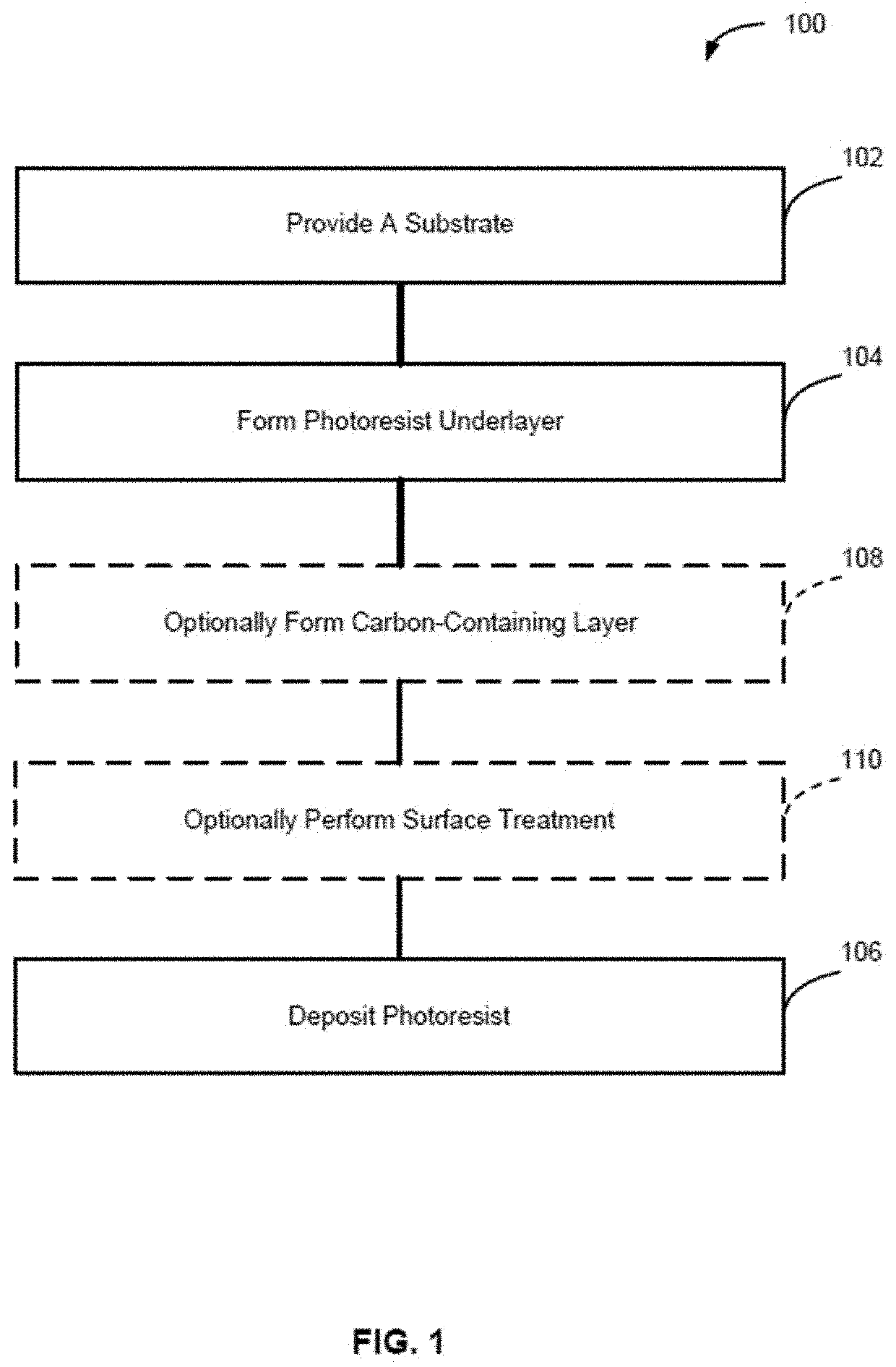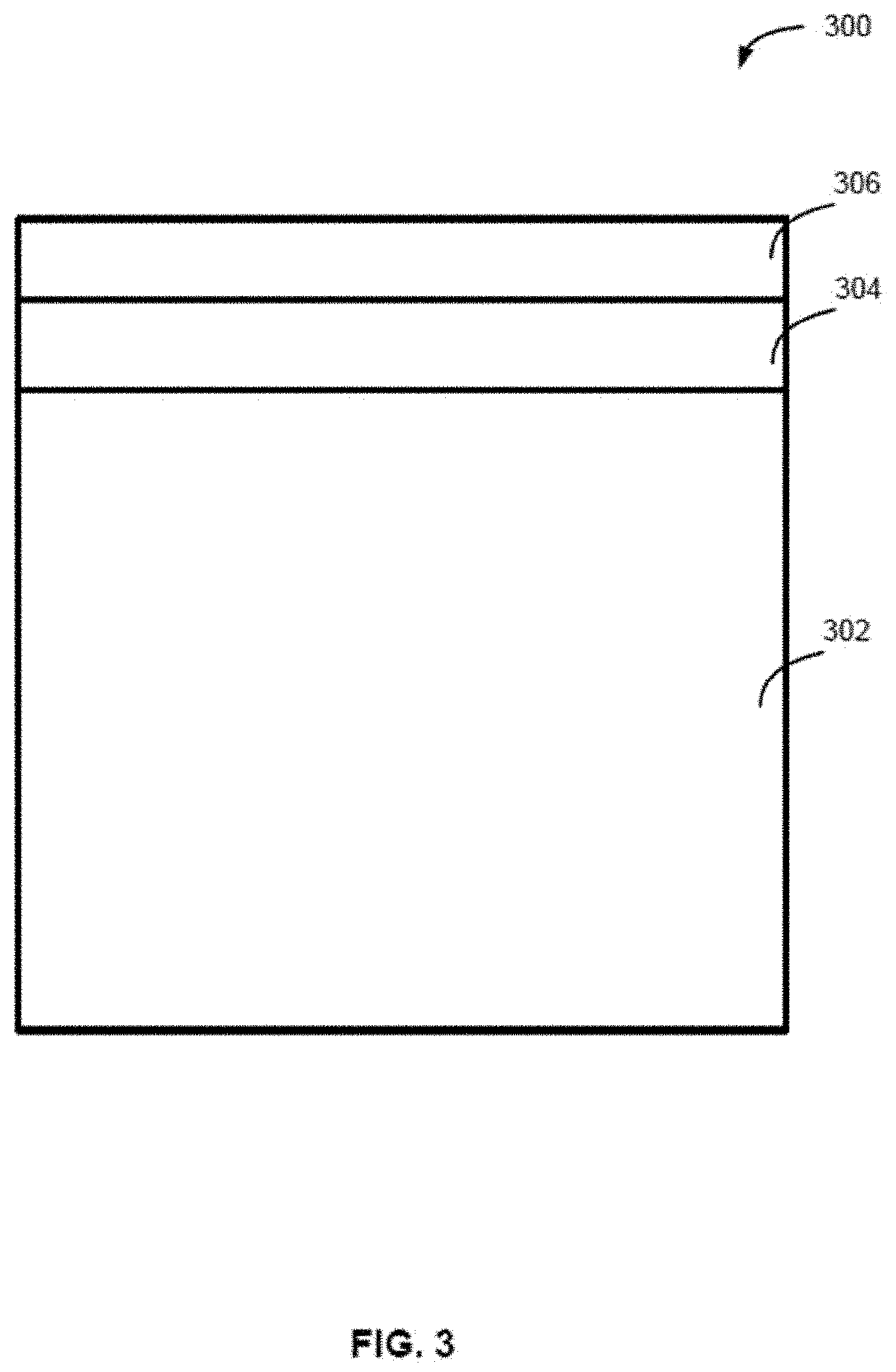Method of forming a photoresist underlayer and structure including same
a technology of photoresistance and underlayer, applied in the direction of photomechanical equipment, electrical equipment, basic electric elements, etc., can solve the problems of inability to deposit sog at a thickness of less than 10 nm, the thickness of the substrate-to-substrat, and the inability to meet the thickness of the substrate. , to achieve the effect of reducing the number of lines, reducing the difficulty of forming a structur
- Summary
- Abstract
- Description
- Claims
- Application Information
AI Technical Summary
Benefits of technology
Problems solved by technology
Method used
Image
Examples
Embodiment Construction
[0107]Although certain embodiments and examples are disclosed below, it will be understood that the invention extends beyond the specifically disclosed embodiments and / or uses thereof and obvious modifications and equivalents thereof. Thus, it is intended that the scope of the invention disclosed should not be limited by the particular disclosed embodiments described below.
[0108]The present disclosure generally relates to methods of forming structures that include a photoresist underlayer and to structures including a photoresist underlayer. As described in more detail below, exemplary methods can be used to form structures with photoresist underlayers that provide desired properties, such as desired thickness (e.g., less than 10 or less than 5 nm), relatively low surface roughness, good adhesion to the photoresist, desired etch selectivity, desired thickness uniformity—both within a substrate (e.g., a wafer) and between substrates, high pattern quality (low number of defects and hi...
PUM
 Login to View More
Login to View More Abstract
Description
Claims
Application Information
 Login to View More
Login to View More - Generate Ideas
- Intellectual Property
- Life Sciences
- Materials
- Tech Scout
- Unparalleled Data Quality
- Higher Quality Content
- 60% Fewer Hallucinations
Browse by: Latest US Patents, China's latest patents, Technical Efficacy Thesaurus, Application Domain, Technology Topic, Popular Technical Reports.
© 2025 PatSnap. All rights reserved.Legal|Privacy policy|Modern Slavery Act Transparency Statement|Sitemap|About US| Contact US: help@patsnap.com



